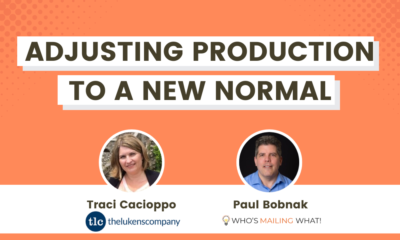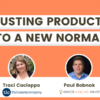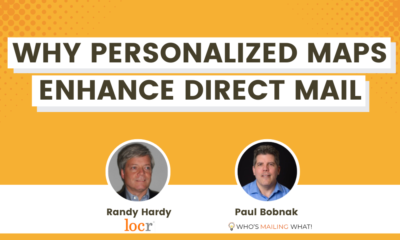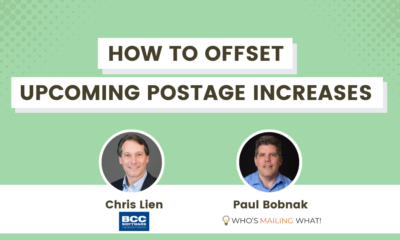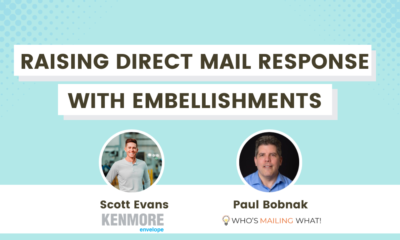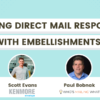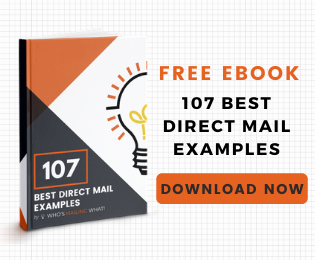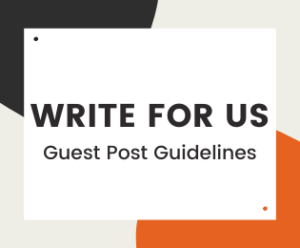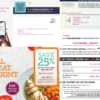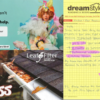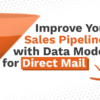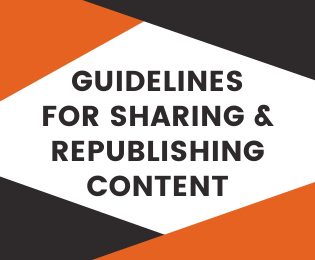MEET THE MAILERS
Meet the Mailers: Extending Your Brand with QR Codes
In this episode, we talked with Flowcode about how the company’s QR codes can build engagement and conversions while delivering valuable insights using data from customer scans.
In this episode, I talked with Corey Daugherty, Head of Business Development for Flowcode. Based in New York City, Flowcode is a top QR provider for instant conversions and real-time data for campaigns in many media channels.
We talked a lot about how the company’s QR codes can build engagement and conversions while delivering valuable insights using data from customer scans.
As Corey said:
There’s so many creative and strategic ways to implement QR now that it can just be an extension of your brand and it doesn’t just have to be ‘hey, we’re going to the website.
 Corey Daugherty
Corey Daugherty
Head of Business Development
Flowcode
Among the topics we covered:
- Corey’s marketing and sales background
- How Flowcode’s solutions differ from other companies
- Best practices for QR codes
- What role QR codes play in customer experience
- Incorporating QR with print & mail piece embellishments
- The future of QR codes in marketing
Here are some questions and answers from our conversation (edited for clarity and space):
- Can you give a little bit of a rundown on Flowcode because I’ve got to say I went to a supermarket, and a lot of the shelf talkers where you see a QR code there, [you] look real close, and it’s a Flowcode?
One of the more interesting things about working at a tech company is that you kind of walk outside and all of a sudden see your product. I think that’s always been a very unique part of Flowcode. But yeah, going back to early 2019, we were working with brands in a very close capacity, doing a lot of tests with them on all types of mediums, direct mail being one, but bus stop ads, catalogs, and TV commercials. I was the youngest in the office. So I was the guinea pig of actually being on some television commercials pointing left saying, “Scan this QR, “and the whole purpose of doing all these tests was to see if we could help directly connect this brand to their customers and potential audience, and we found out two things.
One, if you tell people how to scan, they will, and that went across all mediums, which was really cool to see. But I think the more important thing and kind of the bigger learning that we had was that once people scanned, they were much more likely to actually take an action post-scan then they were in other, digital campaigns so that high-intention action of scanning a QR code was kind of like an aha! moment, which is why we founded Flowcode.com.
The pandemic was a bit of a tailwind for educating people on how to interact with our products, but it also connected a lot of dots for many of the different industries that you see Flowcodes today where hey, I’m at a restaurant, and I’m scanning to see a menu – not the most powerful use case in the world. But if you’re a real estate company I’m scanning to a PDF menu, I wonder “if I could have this on an open house and help me sell a million-dollar home”, and so, fast forward long story short: we’re working now with over 75% of the Fortune 5000 companies, we’re heavily involved in real estate, sports.
I think it’s a pretty unique thing where QR has become so ubiquitous that it really slices across so many different industries. And what we see is, the major use cases are collecting first-party data: name – email- phone – valuable to everybody commerce experiences as well as some type of knowledge share “watch this video” type of content interaction and those three for the most part go across all industries and go into many use cases like direct mail.
- Why don’t we start by at least explaining how many different types of QR codes there are and how Flowcode differs from them?
Yeah. I think it’s a good point: first of all, that just acknowledging that your audience is unique to most audiences about their connection with QR codes… diving into the print/direct mail community, it was very clear early on that a lot of these printers had tested out codes 10 years prior and honestly, were kind of left with a sour taste in their mouth. And so it’s been for good because 10 years ago, we mentioned people didn’t really know how to engage with the QR code back then. The second problem was if they did know how to engage they had to have a separate app on their phone, and then if they knew how to engage, if they had that they had the separate app. And they scan, they’re on an iPhone 4 … not the best mobile experience for that landing page. So you’re not seeing the great conversions that you’re seeing today.
And so now we’re lucky enough to be in a state where all three of those things are not true anymore. And so getting into kind of like the different flavors of QR codes. It’s all built on the same technology. I think what separates Flowcode from the rest is the focus on data, design, privacy, and the eventual conversion. So from a design standpoint Flowcode has a number of patents in terms of creating a more on-brand consumer-facing appealing QR code which kind of shows up in the data where Flowcodes are 2-1/2 times more likely to be scanned than we say “ugly” QR codes, so that’s really important from the design standpoint.
[O]ne of the other things that we really came across was that there wasn’t a lot of privacy or security focus on QR codes that there was in the digital world. There’s all these standards with digital advertising that wasn’t really coming to the QR code. So when we founded Flowcode, we wanted to make sure that we were a privacy-compliant GDPR CCPA SOC 2. And so that’s another differentiator from your standard out-of-the-box free generator – very important when you’re talking to the enterprise-level clients that we work with day in and day out. So that’s a no-brainer. Data is kind of the meat and potatoes of Flowcode and just another core differentiator where the conversion performance is real-time.You can see the blips in your dashboard when you’re running …you mentioned other types of mediums, a TV commercial campaign.
You can see where people are scanning in from. “Oh I didn’t know I had this much audience in Atlanta versus New York.” The insights are real-time. I mentioned geo-specific: you can get into the nitty-gritty of what marketers are used to seeing on their digital campaigns, all the specifics and level of data granularity they can now expect from their offline campaigns. And so that’s really what we’re pushing towards. And then the final piece, like I mentioned, is the conversion …people are excited about getting scans. It’s another click essentially and you’re able to see that, you probably weren’t able to see that before.
But where it scans to is more important to all these marketers into the brands that we work with. So we work very closely with making sure that the scan experience, what are they trying to accomplish? Is it a purchase, is it a form fill out? The list goes on. We want to make that as highly converting as possible. So we have a lot of products – conversion pixels – optimizations to make sure that that is as seamless as possible for the consumer as well.
- Is there any kind of estimate about how much mail includes a QR code as a percentage of the mail universe?
It’s a good question. So, with the USPS promotion that they had last year, we definitely saw an uptick. I wish I had a good percentage for you. I would put it at probably below 10% still which – to me – boggles my mind. That’s why we’re here, I guess, but we definitely saw an uptick in interest from the promotion, which that’s why they do the promotions. I will say, though, that what we’re hoping for in the future from a USPS promotion and working towards and advocating for is focusing – and we’ll get into the best practices – but really focusing on the best practices of QR codes on mail which lead to higher results which lead to people seeing the ROI and wanting to implement more mail.
We want to see it highly activated, if that makes sense …we’ve seen a 300% increase in the scan rate on direct mail just by increasing the size of the code. That’s pretty simple to do, and we understand that there are a lot of decision points that go into a direct mail campaign: who owns the creative, is it the printer themselves, the brand, how is that collaborated, and increasing the size of a black and white code might rub some people the wrong way.
So having that code be on brand and consumer-facing and friendly, number one, is going to increase the scan rate just because of that, but then when it allows for people to be more open to the idea of embedding it into the creative a little bit more which compounds on each other for a higher engagement rate.
- What kinds of best practices with QR codes lead to the big improvements that you’re talking about in engagement and conversion rates, things that elevate that interactivity and allow more measurements by a marketer?
Great question. We talk about this all the time. We’re really fortunate at Flowcode to have a great customer success team that works directly with the printers and the brands to make sure that we’re getting the most out of every single campaign that we can. Size is obvious. You want it to be easily scannable, first of all. And so if you’re able to implement it at a little larger size into the creative, we definitely would advocate to do so. There’s other small tweaks you can do, like a call to action which I mentioned earlier. If the audience, the recipient, is aware of where the scan is going to prior to scanning it, it’s very helpful. Try not to use “scan to learn more.”
So as much as you can to get a little bit more creative or “scan to get X percent off” like that. There’s a lot of incentive ways to just … “OK, if I scan this I know where I’m going.” It’s a value exchange. “Scan for a chance to win” [is] still pretty general, but there are a lot of ways that you can go, so definitely a call to action. A lot of times we help clients append some type of scan education as well, a lot of little graphics, or “use your phone’s camera.”
And then the final one which is specific to direct mail a lot of the times is the ability to make that code hyper-personalized to the recipient. I’ll use the TV commercial as the bad example here.
Unfortunately, you can’t put a unique code on every single commercial that goes out there. [B]ut in direct mail, variable printing … printers do this in their sleep. And so, it yields a really interesting conversion so that their recipient can have not only a unique code that can be tracked uniquely. But the experience can be personalized. You can have that name and address field of a form already pre-populated. You can have “Hi, Corey” at the top of the landing page. There’s all these little things that you can do to reduce friction, increase personalization to increase conversion rate. And doing that at scale, at the millions, right? That’s what people are used to, so that’s kind of like the best practices where the hyper-personalization is very unique to the direct mail world.
And I would like to know which address recipients are interacting with my brand, and able to get that cohort in real time. “This Flowcode ID is matched with this address. And now I know that is different from this Flowcode ID, and this …” So that’s prospecting. There’s also to your known customers, and so if I’m sending something to you, Paul, and I know you’ve been my customer for five years and I know your order history and I know whatever, I can actually tailor that scan experience [of] something to you, taking in all those factors versus some sending to Corey who’s been, a customer for a month and maybe doesn’t know XYZ.
And then there’s the retargeting side of it, this is getting into kind of the programmatic direct mail side of things, which is on the uptick of people kind of understanding what’s going on, where people come to your site all the time. These printers have a lot of this data so that they can actually retarget with the postcard programmatically, and that’s a completely different side of the marketing funnel, but it’s a real-world interaction retargeting versus seeing something on a Facebook ad. So a lot of different ways to get into the different touchpoints.
- What role does a QR code play in creating a seamless unified experience for a customer with their brand and interacting on multiple levels as they’re going along the customer journey?
I think it’s really interesting because it can be so flexible. It really depends on the campaign, the brand, the industry, and all that can be taken into account with where you’re having the scan experience lead to. We have pretty flexible out-of-the-box options. We have a sister product called Flowpage, which allows you to drag and drop videos, linkouts, phone calls, CRM submission forms … that type of stuff onto landing pages, which is an option that we see a lot of brands use, and it allows them to extend whatever they’re trying to do with the campaign.
And another interesting thing, and I would say it’s at its infancy because not many people know that Flowcode provides this capability, but you’re actually able to programmatically set the scan destination based on a lot of scanner factors.
So I’ll give you an example: If someone is scanning in the afternoon versus the morning, you could automatically set and route them to the correct destination based on whatever campaign that you want. You want to have a higher coupon in the afternoon than the morning? Easy. And that can be extended not just the time of day but day of week.
You could also do it by location of the actual scanner, so you could do it by region … so all of these kinds of capabilities allow you to be pretty creative and strategic about the brand extending themselves besides just being a scan to a website. And it gives the experience of what people are used to on digital to the real world.
- What kind of marketing teams do you work with for customer acquisition for direct mail? Do they have to be mail people specifically or do you talk more to channel-neutral growth marketing teams and retention teams?>
It kind of goes back to my earlier answer on us being like QR codes, being so ubiquitous that we’re spread across so many different industries, have great valuable use cases for Flowcode and QR. We get to work with all types of different marketing teams, from the highly experts of direct mail like Quad – we’ve had an incredible relationship with them for the past 3-4 years – down to the mid-level agencies that are working for maybe not a printer themselves, but have those relationships. So the direct brand relationships that are figuring out how to implement their marketing strategy for the next year.
This comes back to our customer success team being able to plug into each and every type of relationship with our clients and it all comes down to putting a highly designed Flowcode that’s going to give you great data and insights onto a print piece, right? Someone’s got to print it. So we’re very fortunate to have a lot of different relationships and past experiences with a lot of different routes to get that Flowcode on paper.
- Thinking of some of these mail pieces that you guys did with Scentisphere and Kenmore Envelope … how does an embellishment on a direct mail piece or print piece help drive action and conversions?
As you mentioned, we’ve been fortunate enough to be able to partner with a lot of experts in the print world that have been doing this a lot longer than us, and have incredible expertise. And you mentioned Kenmore and Scentisphere. They’re creating the IRL touch/feel/smell experiences that are proven to increase all types of engagement, and that’s existed for a while. It’s really incredible to see the advancement of all the embellishments and capabilities that they’re able to do today that we’re obviously interested in it because we see Flowcode, as do others, as a premium, highly-designed code that fits really well with all of these type of advancements and embellishments that you can do just in the look and feel.
Scentisphere specifically, right? You mentioned the scratch ‘n sniff. They’re doing an incredible job of pausing the consumer. All of a sudden, this user is interested because they’re sniffing the cinnamon bun that’s on it. It’s really impressive … super easy to implement, now with Flowcode you’re able to understand real-time action from that interest.
- What trends do you see from your viewpoint for direct mail marketing in the next year? As well as maybe some other things with dynamic QR codes and how that’s going to lead to more changes in campaigns.
Yeah, I mean first of all we talked about programmatic direct mail. So I think that’s gonna continue to increase once people kind of understand that they can retarget with something can arrive in someone that dropped off the conversion funnel on their website, something can arrive in person in two to three days to their doorstep, and they didn’t even have to know their address in order to send that automatically … Once that starts to click more and more. That’s only gonna increase that side of direct mail. So that’s going to be really interesting to watch. I think the dynamic nature, like I said, of programmatically changing the redirects you set it up for, this window of time. It’s going to go to this window of time, it’s gonna go in this region, it’s going to go to that.
I think this kind of comes back to how I see the QR managers of the world really taking shape in the next year. So I always relate this to the social media manager, where once Facebook and Linkedin started to become a real growth marketing channel, that role in every single company was opened for a social media manager, and it really is a whole role of trying to understand what campaigns are running when … “what’s my objective for this one? Am I flipping this off and this on?” I think that same mentality will take into your offline Flowcode manager who is thinking about all of your direct mail campaigns, when things are switching scan destinations, and why, measuring that impact because you have the real-time engagement. So that’s my prediction for the QR world as a whole, and prediction and also a wish that’s what we’re trying to do here. We’re trying to show that it’s the same level of treatment that you’re focused on in your digital channels, you can now have that same level of treatment to your offline channels.
Here is our conversation (with all questions and answers). We’ve added timecodes for your convenience.
Thank you very much, Corey, for sharing your perspective and your expertise! To learn more about Flowcode, visit their website at www.Flowcode.com.
Your comments and ideas are very important to us in making your Who’s Mailing What! experience even better for you. Through these engaging talks, we hope you’ll take away practical tips, insights, and personal stories to inspire and build your own success.
If you have any feedback — or are interested in sharing your expertise and viewpoint with our wide and diverse audience on “Meet the Mailers” — please reach out to me. I’d love to hear from you!









